
April 20, 2016
A Field Guide to Humor in Higher Ed Marketing

Another Monday, another communications department meeting in a cavernous boardroom. Updates from various people of importance. At first, it looks like it’ll be a pretty run-of-the-mill Monday meeting, and then the Vice President drops the bomb: “Guys, I think we need to be more funny. Teens love funny. Millennials love funny. How do we be funny?”
Crickets. Creaking chairs and intense studying of the wood grain of the enormous conference table (is that maple or mahogany?) Humor can & should be a part of your higher ed storytelling & marketing—but how?
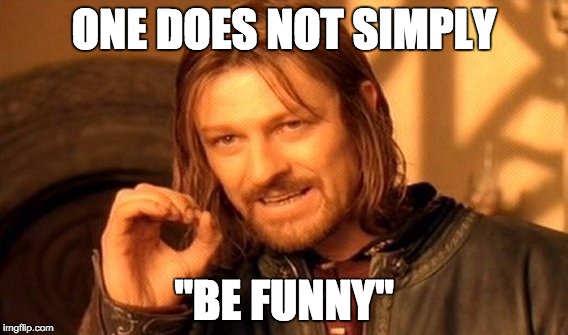
You’ve probably seen this famous meme- Boromir telling it like it is- “one does not simply walk into Mordor.” You might feel the same way about humor in higher ed marketing- one does not simply walk out of the conference room, and go start being funny!
So why should you even try? Is it worth the risk? And where should you start?
First, an important reminder about how humor fits into your higher ed marketing strategy.
Humor is Not A Strategy
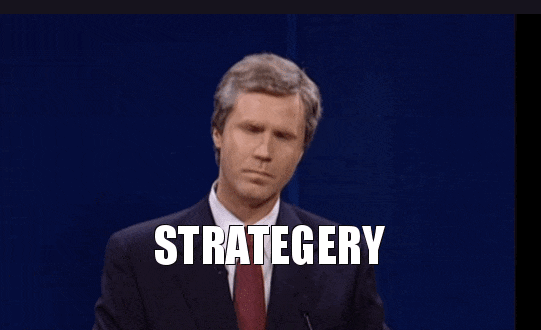
Remember, humor isn’t a strategy. It’s just another part of your storytelling, a way to make connections, show your human side, and make stories more memorable.
First, the upsides of makin’ em laugh.
It Works

Who doesn’t like to laugh? And who wouldn’t admit that a funny ad or campaign sticks in your memory longer than a serious one? And for the higher ed marketer’s target audience, it’s a golden opportunity to connect.
It Shows Your Personality

Higher ed can get a little stodgy at times—I blame the word “rubric.” But that’s often just a stereotype, so reaching outside the traditional “academic excellence, life-long learners” messaging is a great chance to show who you really are. You’re more than a pretty logo, ivy-wrapped columns, and B-roll of scientists pouring things out of test tubes, so show them!
I recently discovered “Perls of Knowledge” from the well-loved former University of Nebraska at Lincoln Chancellor Harvey Perlman. This man is my new higher ed humor hero. His video series “Perls of Knowledge” offers his own brand of insight on life, and they are fantastic. Here’s his take on a certain brand of perforated footwear:
Here’s a university Chancellor (with cameos from Warren Buffett and the co-founder of Twitter) showing some fantastic, dry wit. (Beware, they are addictive.)
So you’re in. What are the risks?
The Thin Line Between #LOLZ and #fail

Things could be purring along beautifully, when out of nowhere, BOOM, train-wreck. We’ve all seen it happen, and before you know it, you’re running damage control faster than you can say “delete the tweet!” Let’s face it, humor is hard, and it’s risky. You could go too far, things could be misconstrued, and you’ll end up on one of those “10 Times Colleges Tried to be Funny and Failed” BuzzFeed listicles.
So how do you incorporate humor into your storytelling without hopping the express train to Failsburg?
Baby Steps
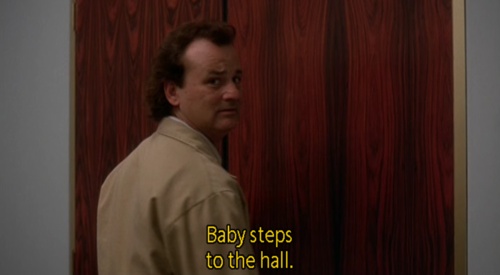
Making humor a regular part of your storytelling can be scary, so don’t do it all at once. As Dr. Leo Marvin advised, just take “baby steps.” Start small, test your messaging with current students. Chances are, if you can elicit a chuckle, you’re on the right track.
Sadly, there is no “sarcasm font,” so it’s wise to think lighthearted rather than sarcastic to steer clear of potential PR disasters.
Start Close to Home
Real life is often the funniest, so start by looking around campus and connecting with student life. Evangel University’s twitter feed is a great example of this:
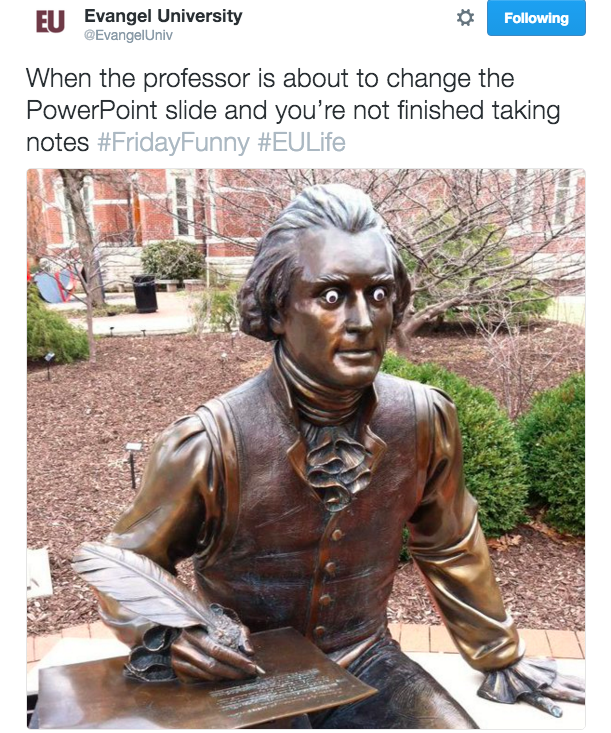
Dorm life, cramming for tests, grad school problems, finding dates for social events, picking a major…starting with common college experiences is a solid, low-risk way to incorporate humor into your higher ed marketing strategy.
Stay Trendy, My Friends
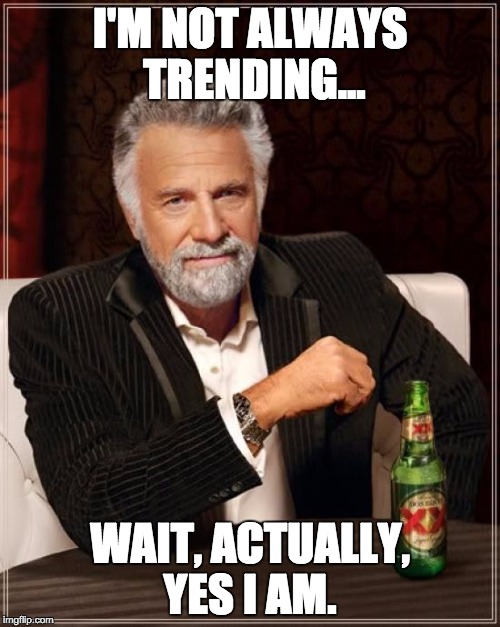
Keep an eye on “what’s trending” on social networks and beyond, so you’ll know what trends to harness for your storytelling. Of course, don’t just jump on every trend—think it through and make sure it works for you. And make sure that meme means what you think it means—if in doubt, again, ask a student.
Know Your Medium
Finally, consider the networks you’re trying to be funny on. Facebook, Instagram, Twitter, Snapchat, Tumblr? Solid choices. LinkedIn? Maybe not so much. As always, content is king but context is queen. Video? Good opportunity for humor. Press release? Probably not.
Don’t be afraid to take a few risks and have fun with it! For encouragement, I leave you with one of my favorite Perls of Knowledge. Because #yolo:
Tell Us What You Think
How do you use humor in your higher ed marketing? What’s worked for you? And (if you dare to share), what hasn’t gone so well? It’s okay, we’re all friends here.


